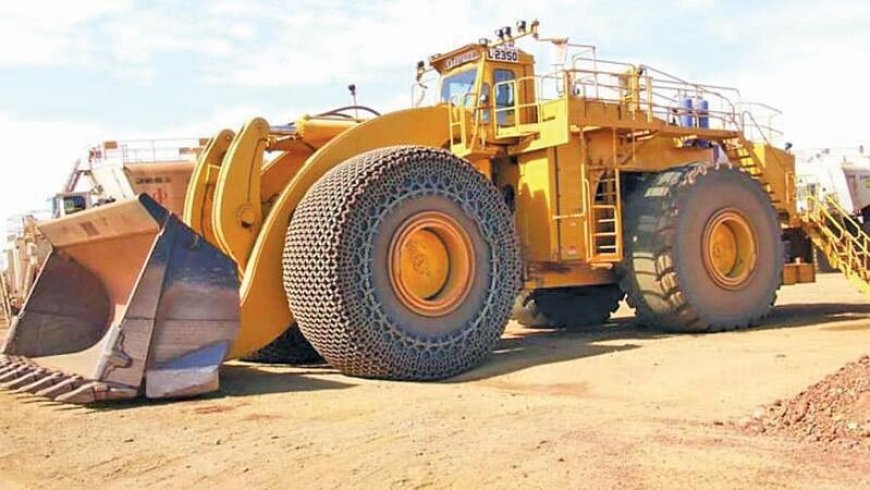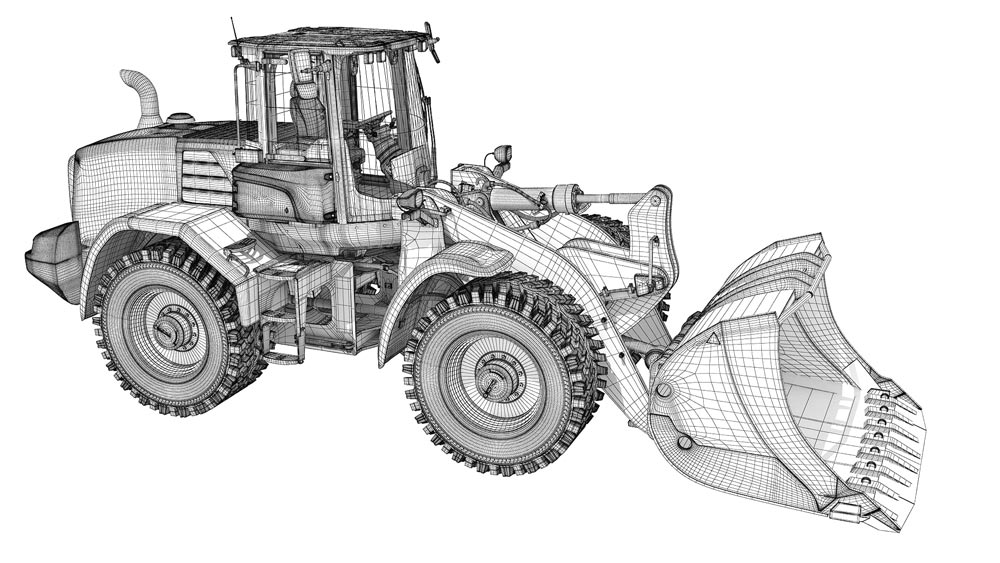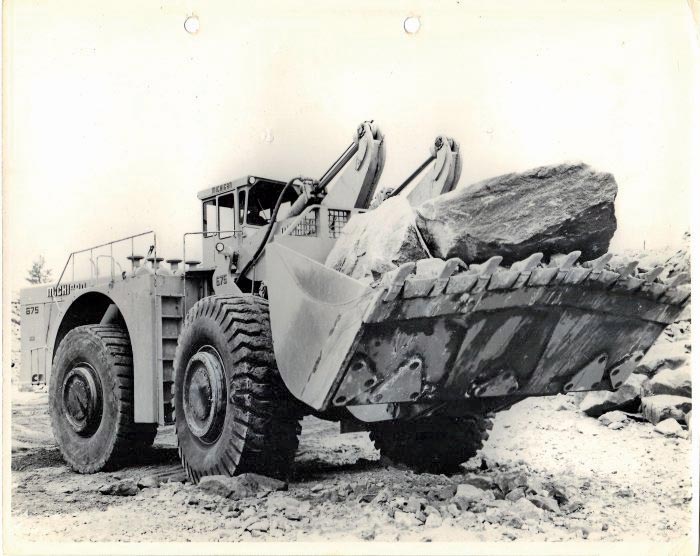A Legacy of Innovation!
Wheel loaders are a powerful and versatile piece of heavy equipment that can be found on most construction sites. A giant mobile shovel, a wheel loader is used to scoop material into trucks or to transport it around a job

Wheel loaders are a powerful and versatile piece of heavy equipment that can be found on most construction sites. A giant mobile shovel, a wheel loader is used to scoop material into trucks or to transport it around a job site.
Equipment Times digs into the chronicle of the Wheel Loaders that can lift almost anything including rubble, gravel, soil, debris and dirt.
The term ‘wheel loader’ refers to the transportation method of the machine and the job it does best. A wheel loader kind of looks like a bulldozer but has wheels instead of a continual track system. Where the bulldozer has a flat blade for pushing material around, a loader sports a bucket to scoop, move and dump material.
Because of the wheels a loader has better maneuverability on roads and does not damage finished asphalt or concrete. Loaders do not dig like a backhoe loader but operate only with the single attachment at the front of the machine.
Wheel loaders (also called wheeled loaders or front loaders) have many other names like front-end loaders, front loaders, bucket loader, scoop loaders and skip loaders.
Loaders come in a variety of sizes which make them helpful for any construction project. No project is too big or too small for a loader. They are bigger and more powerful than a skid steer and are available in a variety of sizes for all different projects and industries. From landscaping to construction, loaders are a handy machine for all different contractors.
The history…
In 1954, Volvo Construction Equipment invented one of the first wheel loaders calling it the H10. Powered by a three-cylinder diesel engine and a 35 horsepower, the H10 was inspired by a reversed tractor and in no time became a big success. In the early 1970’s larger Volvo wheel loaders with articulated steering were introduced with a new type of lift arm system and comfortable cabins with high safety. In 1972 Volvo introduced a larger loader – the LM1641, powered by a Volvo diesel engine of 240 horse power. This machine was kept in production until 1980. Since then, Volvo produced 17 different models, varying from 4.3 tonnes up to 56 tonnes, including much beloved models such as the L110G, L350F, and the L180F.
The First Articulated Wheel Loader
Ed Wagner & Sons Concrete Contractors of Portland, Ore., needed mechanized concrete handling, so they designed a unique, self-contained, truck-mounted concrete mixer and placing tower called the Mixermobile. In 1936, the Wagner family organized Mixermobile Manufacturers to produce the machine.
The Mixermobile’s drum was charged by a skip that was winched up an incline on the front of the truck and then flipped to charge the mixer from above. Looking for a more efficient means of charging the skip, Mixermobile developed one of the world’s first wheel loaders. Dubbed the Scoopmobile, the loader had an unusual tricycle arrangement with driver tires in the front and a steering bogey with paired tires on a swivel at the back. It steered by means of a tiller handle, much like a sailboat, and could be towed at highway speeds behind a truck.
This basic loader design continued into the 1970s and found great favor with highway departments and ready-mix companies, especially in the western states, because of its superior maneuverability.
But the Wagners’ greatest contribution to wheel loader design came in 1953 when they introduced the LD5 and LD10 Scoopmobiles. Rated at 1 and 2 cubic yards, respectively, these were the world’s first articulated-frame wheel loaders. The articulation allowed for up to 20 degrees “bucket swing,” as their sales literature put it. Not only was the steering articulated, but the pivot point also provided left and right oscillation from horizontal.
The LD5 series was produced until 1965, and the LD10 was discontinued in the late 1950s or early 1960s. Mixermobile went on to build an extensive line of models, including a couple of loaders that were, during their production runs, among the world’s largest. But despite its design advantages, the Scoopmobile line never achieved its full potential for success, and it wasn’t until the Euclid Division of General Motors introduced their version of articulated steering in 1959 that the design really took off to become today’s industry standard.
The Wagners sold the Scoopmobile line to Wabco in 1968, and Wabco phased it out after a couple of years. The three-wheel Scoopmobile lived on under designs by Gerlinger Carrier Co. and Eagle Crusher Co., and the Wagners’ loader ideas finally hit their full stride in their successful line of underground equipment that was acquired by Atlas Copco in 1990.
The largest wheel loader
Since it was first revealed to the world at the 2000 World Mine Expo held in Las Vegas, Nevada, the LeTourneau L-2350 loader holds the Guinness world record for the world’s largest earthmover. But to hold this impressive title doesn’t come easy. The design process took two full years to get done, the machine is so big that the standard bucket can hold the equivalent of five dump trucks. One of the biggest problems encountered by the engineers was to create the enormous tires that the L-2350 requires. Being the first from its kinds and size, simply weren’t tires available on the market that were big enough to handle the loads the machine could carry. Produced by Komatsu, the L-2350 uses a diesel electric propulsion system similar to that used in a locomotive. Each rubber-tired wheel is driven by its own independent electric motor.
Most expensive wheel loader tires
It’s no surprise that the trophy of most expensive tires goes to the LeTourneau L-2350. Being one of a kind and never before produced, LeTourneau had to partner with Firestone engineers to design such massive tires that could sustain ultra-heavy loads and rough terrains. Each tire weighs 6.8 tonnes, is 4m in diameter, 1.8m wide and can be covered in chains to extend its life to 12 months. All this awesomeness does come with a big price tag. Each tire costs around USD 63,000 (EUR 56,000).
Wheel loaders in the military
Wheel loaders are extremely versatile machines. Besides their dominant presence in construction and mining sectors, they are also used in other ways – including governments and military.
Big cities around the world like Rio de Janeiro – Brazil, implemented wheel loaders into their defense forces. Their special police squad called Batalhão de Operações Policiais Especiais (BOPE) deals on a daily basis with situations where special vehicles are required in order to maintain safety. In this case they use a modified military wheel loader with special shovels that serve as a barrier. With these the BOPE can assist local police forces in getting access to areas they need to be.
Another interesting wheel loader that was modified for military use is the Werklust WG18Edef used by the Dutch defense forces. These modified wheel loaders weigh 15,000 kilos and are powered by a 118 kilowatts 6-cylinder John Deere engine. The Dutch Marine Corps currently use this machine with an adapted mat laying module attachment that is used to lay aluminum mats on the beach. Other models come with a reinforced steel on windows for extra protection – an unpopular decision among its operators as it decreased visibility from within the vehicle.
The future of wheel loaders
In the last couple of years, more and more manufacturers are revealing concepts of modern machines – some of them seemingly coming straight out of science fiction movies. A common theme is emission reduction, but interestingly the manufacturers take different approaches.
At Bauma 2019, Case unveiled the Tetra wheel loader. With a futuristic look and an advanced operator environment, this machine uses natural gas instead of diesel and crunches out 230 horsepower. Case claims it delivers the same performance as its diesel equivalent.
Volvo Construction Equipment is also bringing sustainable technology to the market. Two zero emission machines were launched in April 2019, including the ECR25 excavator and the L25 compact wheel loader. The L25 is fully electric and powered by lithium-ion batteries that allow the machine to work for 8 hours before needing to recharge. The L25 also incorporates two separated electric motors, one for the drivetrain and one for the hydraulics. Aside from environmental advantage, the machines are almost noise free as well.
Also in its concept stages is the full electric Cat compact wheel loader, the Cat 906. The ecofriendly machine generates zero emissions and delivers a very versatile performance. This wheel loader was inspired by the existing Cat 906M but instead of diesel the Cat 906 is powered by a sealed lithium-ion-battery.
Throughout our industry there’s so many who love wheel loaders – and rightfully so. They’re amazingly powerful and versatile pieces of machinery, come in all sorts and sizes, making them one of the most essential tools at any job site.
Clark Michigan wheel loader history
The Clark Equipment Company took control of the Michigan Power Shovel Company in 1953. In those days the brand name Michigan was so synonymous with the manufacture of quality wheeled loading shovels that Clark continued to market the machines as Michigan. These two videos offer a great insight into the history of this once great wheeled loader manufacturer who at the time produced a big range of shovels which culminated with the massive 675 which carried a 24 cubic yard bucket and was powered by twin Cummins engines which offered a power output rating of 1,270hp! The production run for these giant machines was relatively short, the model being discontinued in 1976 and only 14 of them being manufactured.



Hits: 8








